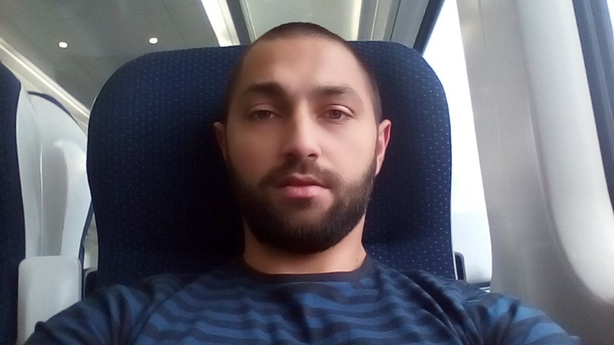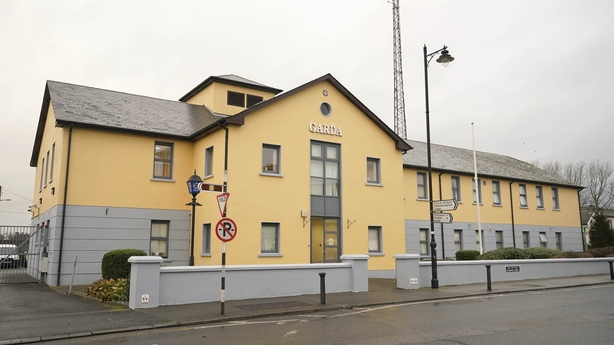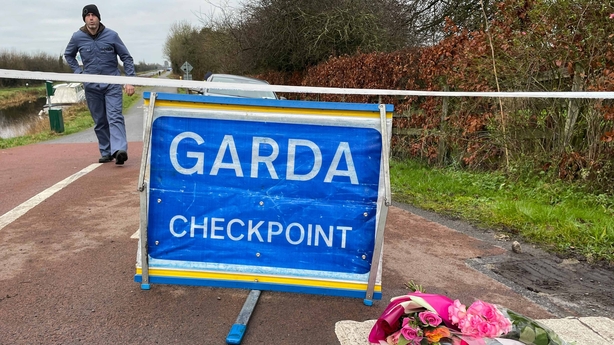School teacher Ashling Murphy had 12 wounds to her neck caused by a knife, 11 of them stab wounds, the Central Criminal Court has heard.
State Pathologist Dr SallyAnne Collis said one of the stab wounds damaged both sides of Ms Murphy's voice box, meaning she would have been unlikely to be able to speak or make any intelligible sound after it was inflicted.
She said she could not rule out the possibility that there was also strangulation or compression of Ms Murphy’s neck, but she said her death was caused by the stab wounds which damaged major veins and a major artery.
Jozef Puska, 33, has pleaded not guilty to the murder of Ms Murphy beside the Grand Canal in Tullamore on 12 January 2022.
The Central Criminal Court heard that Dr Collis carried out what was described as a "complete and exhaustive examination" of Ms Murphy’s body from head to toe.
She detailed 11 stab wounds inflicted with a knife and a 12th wound, called an incised wound, which was longer rather than deeper, but also caused by a knife.
The stab wounds were predominantly on the right side of her neck.
Some of the wounds were suggestive of having been caused by a serrated blade, she said.

One of the stab wounds had gone through both sides of her voice box and Dr Collis said this would have meant, along with the other injuries to Ms Murphy’s neck, that she would have been unlikely to have been able to speak or make any intelligible sound.
The stab wounds damaged her left and right jugular veins and her right carotid artery.
The loss of so much blood would have meant a drop in blood pressure that would have caused Ms Murphy to go into cardiorespiratory arrest, Dr Collis said.
She also said injuries on Ms Murphy’s hands may have been sharp force injuries which were potentially defensive in nature and may have been caused by her holding up her hands to try to protect herself.
It was not possible to completely exclude the possibility of external pressure to Ms Murphy’s neck, but Dr Collis said the cause of death was the stab wounds to her neck.
Dr Collis agreed with a suggestion from defence counsel Michael Bowman that a right-handed person was more likely to inflict injuries on the left side of a person’s neck and vice versa.
But she said this would be if both people were facing each other.
Under re-examination from prosecution counsel Anne-Marie Lawlor, Dr Collis said a situation such as this one was likely to be completely dynamic with people moving around.
The right side of Ms Murphy’s neck may have been exposed and her neck may have been moved, she said.
Earlier, the court heard evidence from the first gardai at the scene where Ms Murphy’s body was discovered.
Garda Tom Dunne told the court he and his colleague attempted CPR on her body for ten to 15 minutes.
Garda Dunne said he was on duty at Tullamore garda station when he received a call from a man who sounded very distressed.
The man wasn’t "making a whole pile of sense," the garda told the court, and just kept saying there was a body in the ditch and mentioned Boland’s Lock and Digby Bridge.
The garda said the man did not sound like he knew what had happened but from the panic, it sounded like something serious had happened.
He got his colleague, Garda Shane Hunter, and they drove to the scene.
When they arrived, the location was pointed out to them.
Garda Dunne said he could see straight away that there was a body in the ditch – around five to six feet in from the path and the same distance down.
He agreed with Ms Lawlor that there was quite a degree of undergrowth and brambles in the ditch.
The body appeared to be a woman he said – she was wearing a navy jacket up to her neck, navy leggings, blue runners and there was a pink woolly hat close to her body.
Garda Dunne said he put on disposable gloves, went down into the ditch, unzipped the woman’s jacket and began doing chest compressions.

Garda Hunter was behind him he said, and they alternated doing the compressions for about ten minutes or more.
He said the woman’s hair was matted, covered in blood and caught in briars.
Garda Hunter told the court he could see around ten lacerations on her neck.
When paramedics arrived, they lifted her body out of the ditch and continued working on her on the walkway.
They used a defibrillator but stopped working on her when there were no signs of life after some time.
Garda Dunne said when the woman was laid on the pathway, he could see holes or puncture wounds under her neck.
He said he could see four or five such wounds, but he said there was so much blood it was impossible to see.
The woman had a phone in her jacket pocket as well as keys to a Seat car.
He told the court a there was a necklace around her neck with the word Ashling on it.
He said he also saw a bicycle at the scene close to where the body was.
Garda Hunter said he noted that Ms Murphy’s phone had a running app on the screen.
He said the phone noted a time of one hour and 24 minutes and a distance of 3.2km.
Detective Sergeant David Scahill also gave evidence of arriving on the scene.
He described seeing Ms Murphy on the walkway.
He said her body was limp at that stage and he recalled looking at her and noticing that her mouth was wide open.
Garda Andrew Dolan was in the third garda vehicle to arrive at the scene.
He observed his colleagues doing CPR and he told the court they indicated they thought the woman still had a slight pulse.
He said they were not immediately aware they were dealing with a fatality. They still had hope, he said.
He went to a house near the canal shortly afterwards as he saw a CCTV camera outside, but he said the camera wasn’t working.
When he heard the description of the suspect, he thought it fitted the description of a man known to him and he suggested to his colleagues that they should speak to him.
This man was later arrested and spoken to. But the court has heard the only person ever charged with Ms Murphy’s death was Mr Puska.

The trial also heard from Emma Doyle whose parents lived close to the canal.
She told the court she had gone for a walk along the canal at around 3pm that afternoon and had encountered a man on a bicycle.
She said she saw a woman walking and a man on a bicycle very close to her.
She said at first she thought they were together as they were so close but then the cyclist passed the woman.
She said the bicycle had neon green on its front.
The cyclist had a black tracksuit top and dark bottoms on.
He had a tight crew cut, dark hair, dark stubble, sallow skin and what she described as "striking", "unusual" eyes.
She said she did not think he was Irish.
As they passed they said hello to each other and she kept walking.
A short time later, she was in the sitting room of her parents’ house when she heard voices outside.
She saw two women, Aoife Marron and Jenna Stack, who gave evidence to the trial on Wednesday.
They appeared shocked and upset about something, she said, and told her a girl had been attacked down the canal.
She told the court that Aoife asked Jenna: "How did you see that?"
Jenna replied that she saw the bicycle and saw the legs kicking up and down.
Jenna said she shouted at the man to stop and that she would call the guards and that he turned around and told her to "f off".
The jury is expected to watch CCTV footage on Friday.
Live: Follow developments in the trial here






